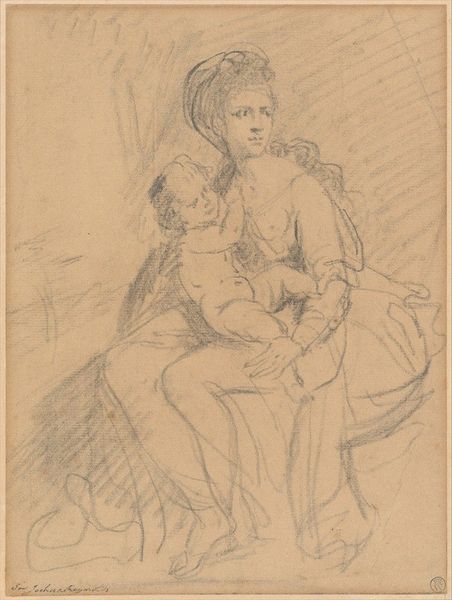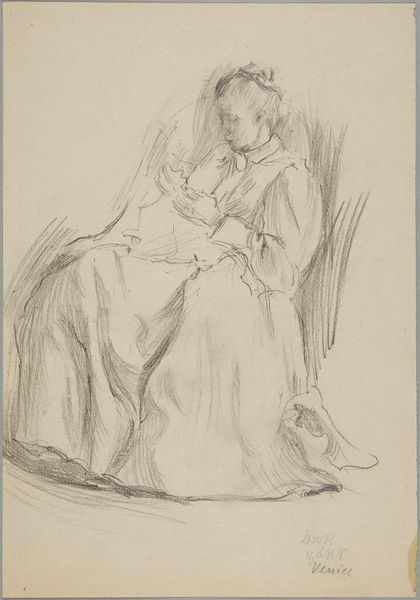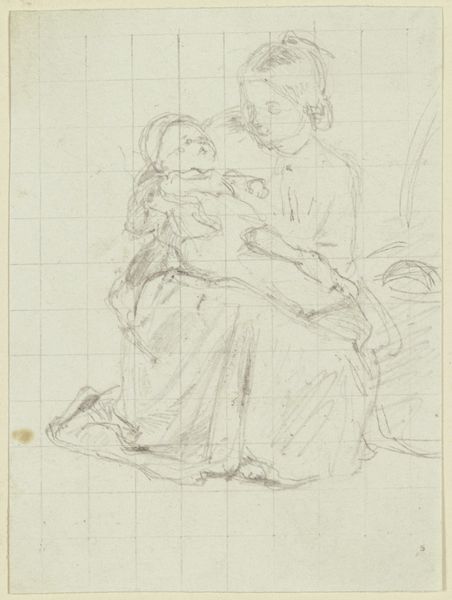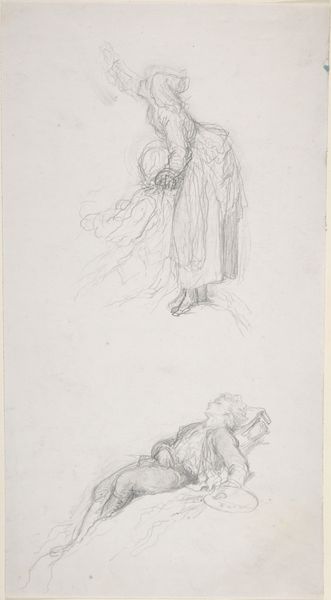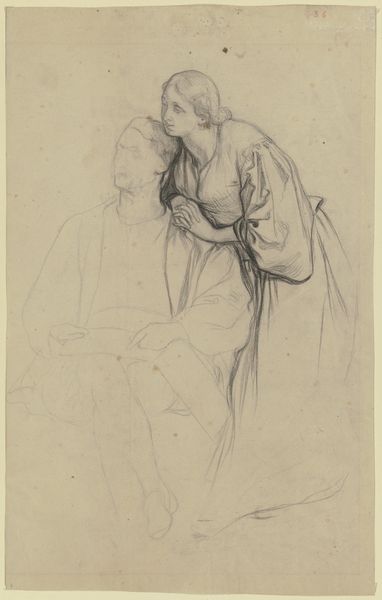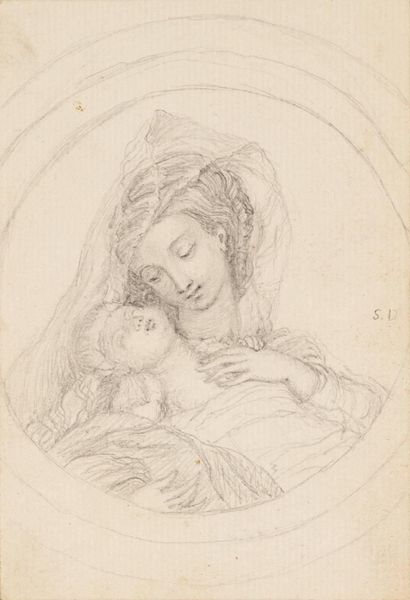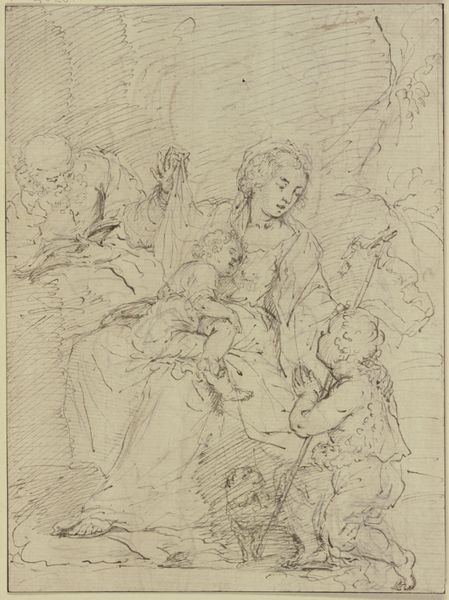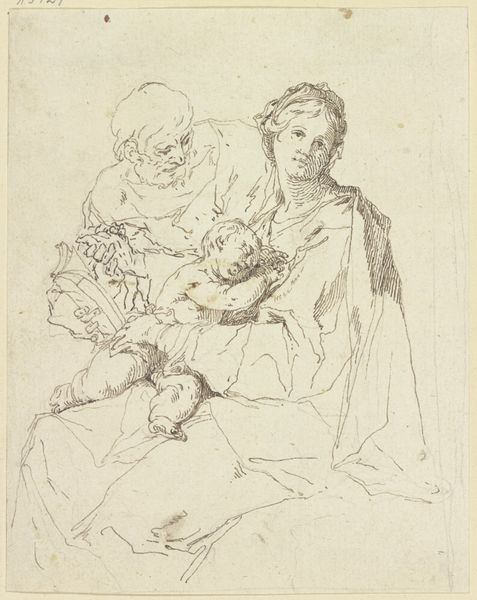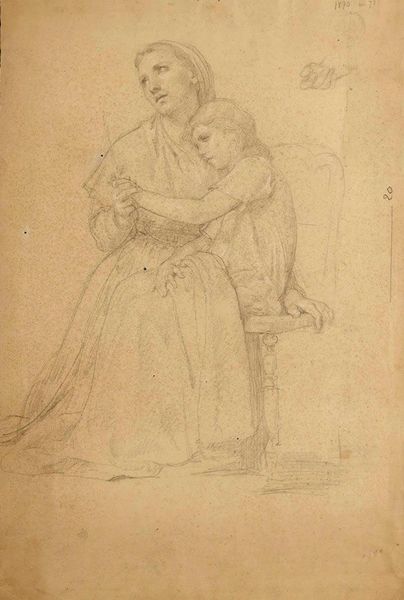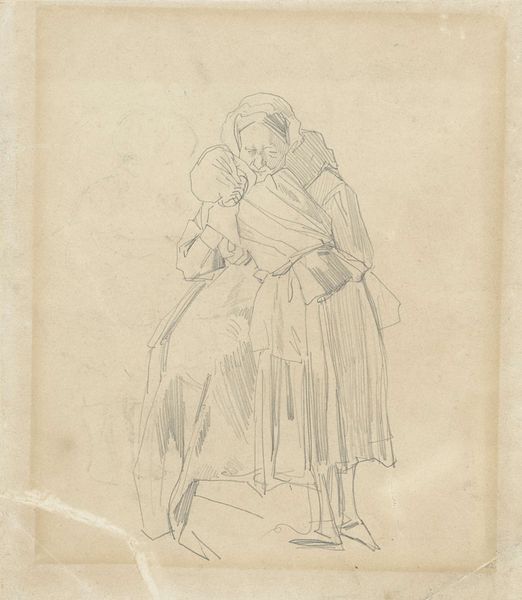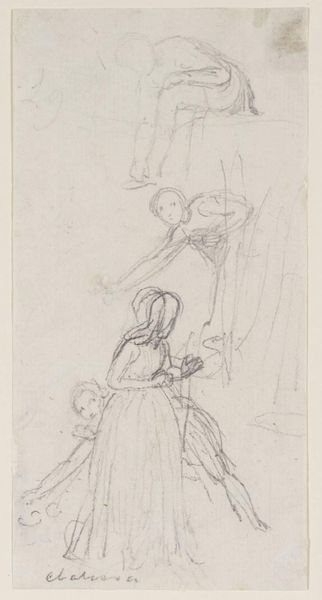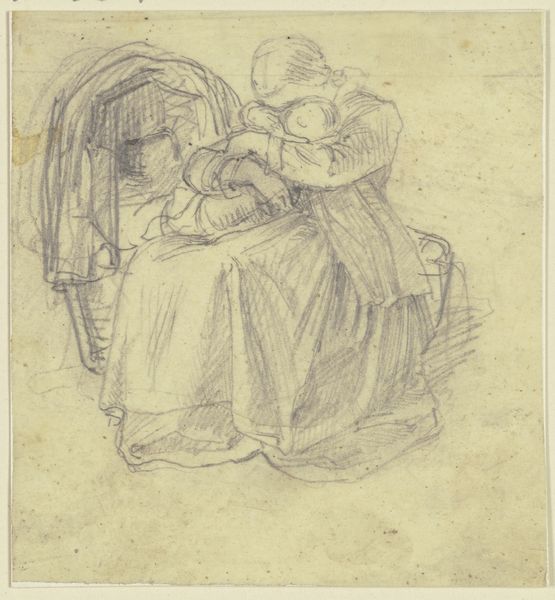
Sketch of Catherine Jagiellon with son Sigismund and John, Grand Duke of Finland, to the painting ‘Catherine Jagiellon in Gripsholm Prison’ 1858
0:00
0:00
drawing, pencil
#
portrait
#
drawing
#
pencil sketch
#
pencil
#
portrait drawing
Copyright: Public Domain: Artvee
Curator: We're looking at a pencil sketch by Józef Simmler from 1858, titled 'Sketch of Catherine Jagiellon with son Sigismund and John, Grand Duke of Finland, to the painting \u2018Catherine Jagiellon in Gripsholm Prison\u2019.' Editor: It's very soft, almost dreamlike, isn't it? The delicate pencil lines create a feeling of vulnerability, particularly around the figures of the mother and child. Curator: This drawing functions as a preparatory study for Simmler’s more famous painting, which dramatically portrays Catherine Jagiellon’s imprisonment. Knowing that context shifts the feel, doesn't it? The vulnerability reads less as inherent, more as imposed. Editor: Yes, you’re right. The use of line, though, emphasizes this. The barely-there quality suggests a fleeting moment, a captured emotion more than a formal depiction of imprisonment. What can you tell us about the composition? Curator: We see Catherine embracing one child, another figure looming ethereally behind them, presumably John. The composition emphasizes Catherine’s maternal role, positioning her as a protector amid political turmoil. The original painting would dramatize this far more. Editor: I’m struck by the textural contrasts, even within the monochromatic palette. See how the shading on Catherine’s dress creates volume while the distant figure remains only vaguely defined by contours. This suggests absence but also presence. Curator: Absolutely. Remember that the finished painting served a vital political function in its time. Presenting a sympathetic view of Polish-Swedish relations was important. The original context shifts the weight and the implications here. Editor: For me, it's the emotionality conveyed through such simple means. It distills the drama of captivity down to its human core. I get that the intended political messaging is vital. Yet there's an honesty about human affect that goes far beyond historical narratives. Curator: It is compelling how Simmler manages to evoke complex emotions, like isolation and fortitude, with such light strokes. Seeing it as a step towards the larger painting helps highlight his sensitivity to character and composition, though the formal analysis sheds different lights as well. Editor: Agreed, the combined insight highlights that a mere preliminary study like this offers profound engagement with how power shapes intimate human bonds, as shown in art making practices.
Comments
No comments
Be the first to comment and join the conversation on the ultimate creative platform.
